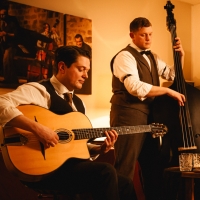DjangoBooks.com
Welcome to our Community!
Categories
- 17.9K All Categories
- 394 General
- 255 Welcome
- 10 Archtop Eddy's Corner
- 74 CD, DVD, and Concert Reviews
- 29 FAQ
- 9 Gypsy Jazz Italia
- 17 Photos
- 24 Gypsy Picking
- 3 Unaccompanied Django
- 1 Pearl Django Play-Along Vol.1
- 1 Gypsy Fire
- 21 Gypsy Rhythm
- 551 Gypsy Jazz University - Get Educated
- 104 Gypsy Jazz 101
- 175 Repertoire
- 128 History
- 88 Technique
- 39 Licks and Patterns
- Daniel Givone Manouche Guitare Method Users Group
- 17 Eddie Lang Club
- 996 Gypsy Jazz Gear
- 645 Guitars, Strings, Picks, Amps, Pickups and Other Accessories
- 315 Classifieds
- 36 Recording
- 38 Other Instruments
- 17 Violin
- 3 Mandolin
- 6 Accordion
- 3 Bass
- 9 Woodwinds
- 197 Gypsy Jazz Events
- 78 North America
- 81 Europe
- 38 International
In this Discussion
Neck angle
I've heard some talk about "neck angle". Could some one take a minute and explain what it is, why it's important, how is it measured, and what is considered "good" (or "not good").
Thanks
Greg
Thanks
Greg










Comments
Within the confines of the Selmer style guitar at least, I'm not sure that neck angle in of itself is of much importance. I think it is simply necessitated by the relative elevations of the top at the neck join and the top of the bridge. A top with a lot of arch and a tall bridge will require more neck angle for the strings and the fingerboard to line up. The amount of arch, the bridge height and the resulting break angle of the strings over the bridge have a lot to do with tone and volume. But neck angle itself is just accommodating these other factors. A high neck angle is noticeable and may therefore be associated with a guitar with high arch and bridge. If you like the sound you get out of the arch and bridge, you might learn to like the high neck angle, but I can't see any reason that the angle itself contributes anything.
Of course the neck could be set at other angles if you don't mind the finger board being right at the surface of the top. Suppose instead of angling the neck, the neck was shimmed up so the neck was parallel to the top. In some cases it might have be an inch or more above the top. The result would be less break angle over the strings. At the other extreme, say the fingerboard could be somehow extended below the top (reverse neck angle), we might end up with a really flat top, a very short short bridge and high action. These are exaggerations but even in the extreme, it is not the neck angle itself that effects the sonic qualities, rather it is what happens at the bridge that counts.
Anyway, that's the way see it. If someone thinks otherwise, I'd love to know about it.
Craig
Craig
Simple concept... but here's where people tend to go awry... by thinking that either more or less neck angle is always better. Actually - neck angle is a balancing variable. You vary it to vary tension because your goal is to achieve string pressure that matches the mechanical reactance/resistance of the string to the mechanical reactance/resistance of the soundboard at the level of efficiency and damping you require for the design. OK... that sounds more complex than it is. What's that mean? well - it's sort of like shock absorbers on a car. If your shock absorbers are too weak or small, your car will bounce up and down like a '72 Cadillac on a bad road.... this is called "underdampened" and an underdampened guitar tends to not know when to stop vibrating - or more commonly it has funny vibrational modes that make it sound sort of like a cheap flat-top guitar. This is often called 'wetness' though really - that term is so misunderstood I wish we could do away with it entirely... but I digress. The other extreme, or "overdampened" would be like having shocks that were too stiff... this is like a guitar with too much string tension for its design. A guitar that sounds dull/thuddy or has no reverb / no sustain / little to no harmonics or just generally sounds like it has old strings no matter how new the stings are - may be overdampened/overdamped. (or it could just be a crappy guitar... haha..)
So - considering the above... the answer to 'what is neck angle and why is it important'?... Well, said simply, the degree of neck angle is one very important variable for setting the amount of pressure that the strings deliver to the soundboard, and it is important because the amount of pressure needs to be within a certain range for a design to efficiently turn the energy you put into the strings into soundboard vibration while properly controlling the vibration of the top so it gives you the acoustic characteristics you want - including volume, dynamic attack, sustain, presence of harmonics/overtones... all the stuff that makes people say: "Man, that's a great guitar".
Of course, neck angle is only one variable - so don't ascribe too much importance to it. In order for it to matter - a whole bunch of other things need to be right on the guitar. Increasing or decreasing neck angle on a guitar whose design is fundamentally flawed may not yield any results - or may introduce other problems.